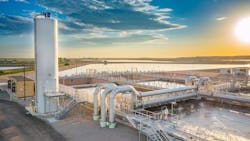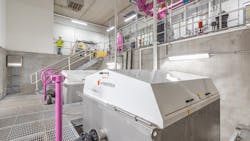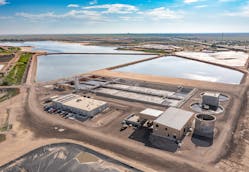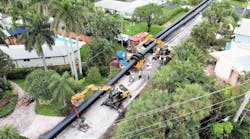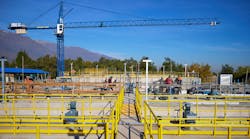Stricter nutrient removal requirements and planned changes at a Kansas wastewater treatment facility pushed National Beef to build its own plant.
National Beef is a major beef processor located in Liberal, Kansas. Prior to constructing its own facility, National Beef pretreated its wastewater with screening, suspended air flotation and anaerobic treatment cells before being discharged to the publicly owned treatment works. In constructing the new plant, National Beef discovered it could treat the wastewater to a higher level and also reuse effluent, reducing its dependence and pull on the Ogallala Aquifer.
National Beef selected HR Green to assist with the design of a new biological nutrient removal wastewater treatment plant that would meet state requirements.
“The plant successfully allows us to operate independently of the POTW while beneficially reusing up to 9,000 gallons per minute of treated wastewater in crop irrigation in partnership with a local farmer,” said David Kalscheur , vice president of engineering for National Beef.
The heaviest use of the Ogallala Aquifer is agricultural irrigation. National Beef sought to reuse its treated effluent for that purpose in partnership with a local farmer for crop production in addition to use within its facility to wash trucks, belt filter presses and other beneficial resue options.
The construction included a raw lift station, a 5-stage Bardenpho process for biological nutrient removal, secondary clarifiers, disc filters, aerated sludge holding and sludge dewatering with belt filter presses. In total, the new plant treats 4.5 million gallons per day and an irrigation pump can redirect 9,000 gallons per minute of flow to the neighboring farmland for beneficial reuse.
The facility still has the option to discharge effluent to the POTW during months with low irrigation needs, but for the majority of the year allows the facility to remain independent.
“The National Beef Liberal wastewater treatment plant project removed the industrial wastewater from the Publicly Owned Treatment Works system,” Eric C. Staab, P.E., Bureau of Water, Industrial Program Section, Kansas Department of Health & Environment. “This allows the new POTW to operate without complications created by the industrial wastewater.
The National Pollutant Discharge Elimination System permitting for the POTW influenced the treatment levels for National Beef. In turn, it established limits of < 10 mg/L of total nitrogen and < 1 mg/L of total phosphorus.
“The project reduced the nitrogen and phosphorus loading to the Cimarron River, and provides the beneficial use of wastewater effluent irrigation onto agricultural land while simultaneously reducing the demand for groundwater used for irrigation,” Staab said.
Using construction manager at risk, National beef and HR Green created a collaborative environment for the planning, design, construction and value engineering services for the entire project. This kept costs low and reduced scheduling disruptions.
HR Green created a plant operations manual prior to start-up for operator review, which helped the team solve problems with foaming, high oil and grease and filamentous bacteria. Additionally, biological seed was developed organically with the incoming wastewater for initial start up due to a lack of biological seed available locally.
